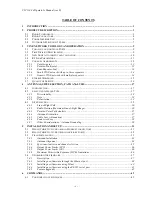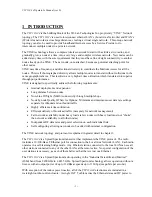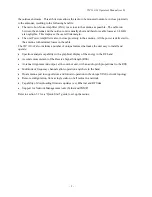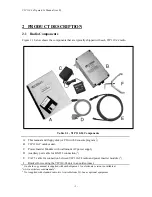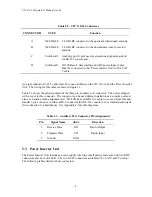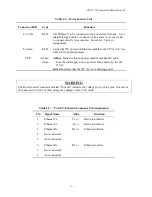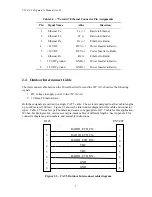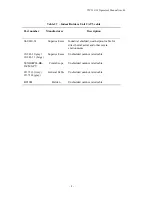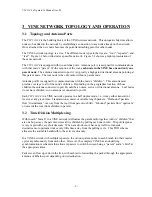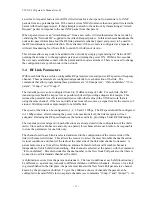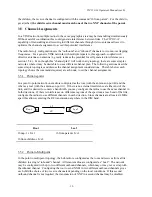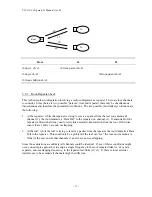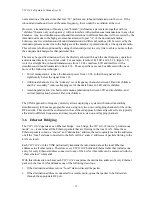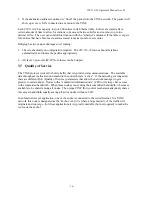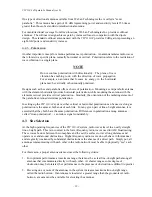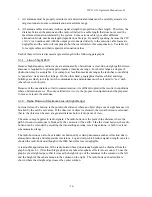
VIP 110-24
Operator’s Manual (rev E)
- 9 -
3
VINE NETWORK TOPOLOGY AND OPERATION
3.1
Topology and Antenna Ports
The
VIP 110-24
is the building block of the VINE wireless network. This unique architecture allows
nodes to be added to the network by establishing a connection to any node already on the network.
Once attached, the new node becomes the potential attaching point for other nodes.
The VINE network topology is a tree. The different node types in the tree are: “root”, “repeater”, and
“leaf”. Figure 3.1 below illustrates a possible network. Figure 3.2 shows a graph representation of
the same network.
The
VIP 110-24
is equipped with two antenna ports. Antenna port A is assigned for communications
with that node’s “parent”. With exception of the root,
each node in the VINE has one and only one
parent node.
The antenna connected to port A is typically a high gain directional antenna pointing at
this parent node. The root node is the only radio without a parent node.
Antenna port B is assigned for communications with the node’s “children”. This antenna must
provide coverage to all of the node’s children. Depending on the geographic location of those
children the antenna connected to port B could be an omni, sector, or directional antenna. Leaf nodes
do not have children, so no antenna is connected to port B.
Each
VIP 110-24
in a VINE network operates in a half duplex mode, i.e., it may either transmit or
receive at any given time. Transmissions consist of variable length packets. “Outbound” packets
flow “downstream” or away from the root (from parent to child). “Inbound” packets flow “upstream”
or towards the root (from children to parent).
3.2
Time Division Multiplexing
Within each “branch” in a VINE network (defined as the parent radio together with its “children” that
are one hop away), the parent services all its children by polling each one in turn. The poll/response
is very rapid with very short timeouts. When a radio does not have any traffic to transmit
downstream or upstream it takes very little time away from the polling cycle. This TDD scheme
allocates the available bandwidth to the active radios only.
In a VINE network with multiple repeaters, the various parent nodes in each branch run their master
cycles asynchronously from each other. However, the complete VINE has an underlying
synchronization mechanism that allows repeaters to switch between being a “parent” and a “child” at
the appropriate times.
Packets can flow up or down the tree, with each radio forwarding the packet through the appropriate
antenna or Ethernet port depending on its destination.
Summary of Contents for VIP 110-24
Page 2: ......
Page 5: ...VIP 110 24 Operator s Manual rev E iv...
Page 37: ...VIP 110 24 Operator s Manual rev E 30...
Page 73: ...VIP 110 24 Operator s Manual rev E 66...
Page 89: ...VIP 110 24 Operator s Manual rev E 82...
Page 91: ...VIP 110 24 Operator s Manual rev E 84...





